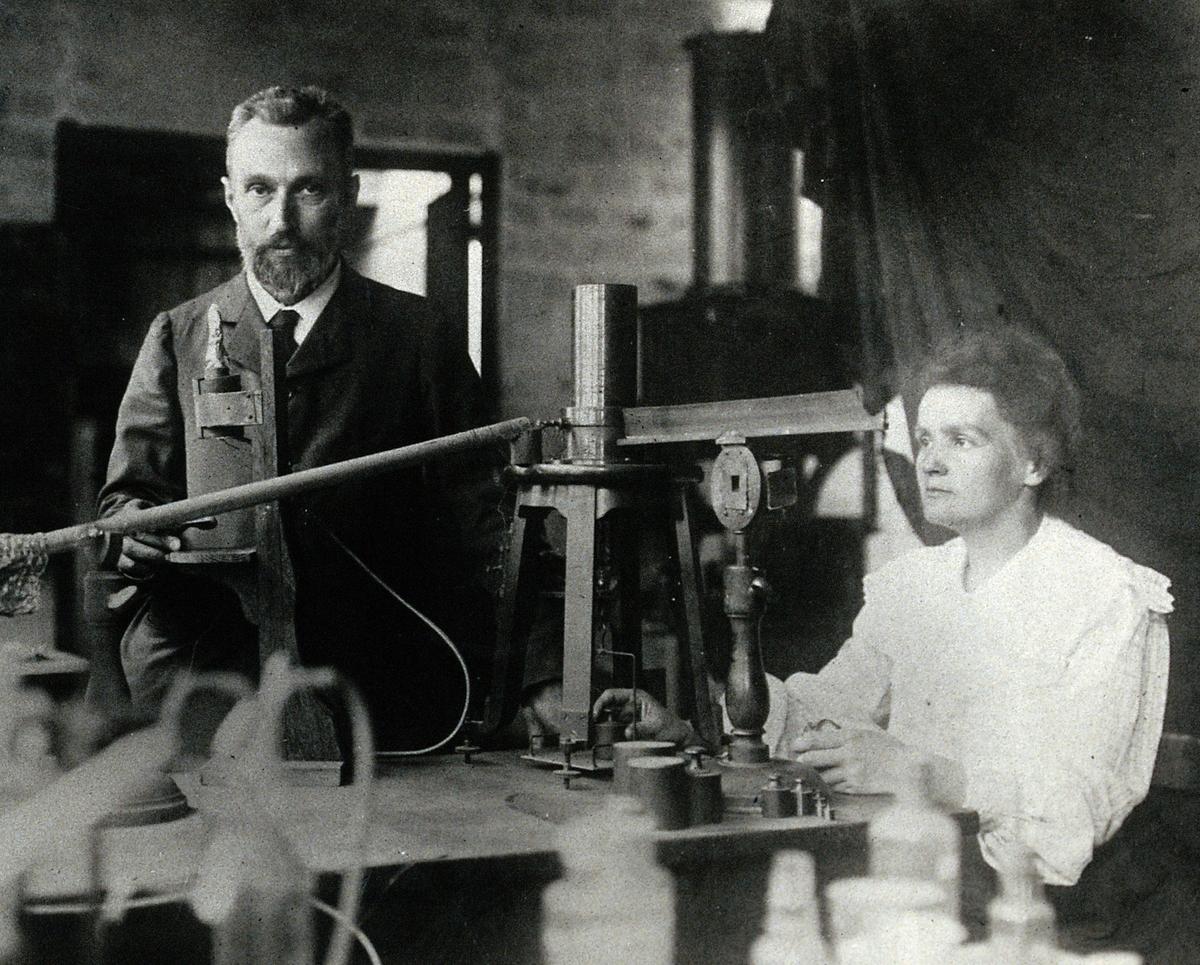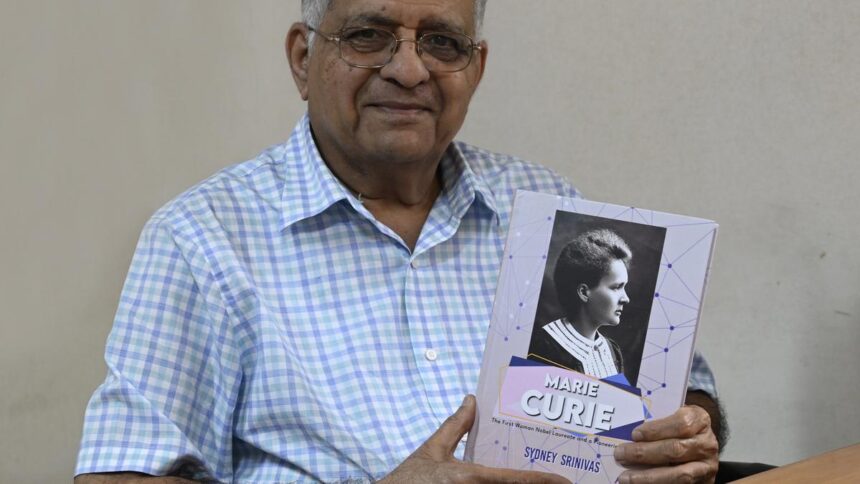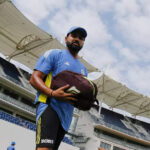[ad_1]

Sydney Srinivas
| Photo Credit: K BHAGYA PRAKASH / THE HINDU
Aerospace engineer Karkenahalli Srinivas, also known as Sydney Srinivas, recently wrote a book on Nobel laureate Marie Curie, available in both English and Kannada, published by Prism Books. The book presents previously unreleased information about Curie, made public by her granddaughter in 1990, and blends Curie’s personal and professional life. It delves into her contributions to science, particularly in radioactivity and nuclear physics, offering insights for both general readers and science students.

Curie with her husband Pierre Curie
| Photo Credit:
Wikimedia Commons
The book was recently published in July and will be launched in Warsaw, the capital of Poland, Marie Curie’s birthplace, on September 18. It will be followed by another launch at the museum of Institut Curie, Paris, which the renowned physicist established.
Professor Marie Curie working in the laboratory of Paris University in 1925.
| Photo Credit:
–
In this interview with The Hindu, talking about his new book, Srinivas shares that his interest in writing about scientific personalities, including Srinivasa Ramanujan and Albert Einstein, began in 2012 after his retirement. He emphasises the importance of making scientific literature available in regional languages like Kannada, highlighting that there is a significant gap in such resources. He believes that writing about science requires a strong understanding of both science and literature and encourages young writers to develop a reading habit to succeed in this genre.
Tell us a little about your new book Marie Curie.
The book contains information on Marie Curie that was not available to the public until 1990 when Curie’s granddaughter released it for public use. This information is still not easily accessible or available to all, because of which I wanted to put it in a book and make it accessible for all. The book is a life account on her and has many scientific aspects to it like what radioactivity is, how it was discovered and more. The book also talks about Curie‘s impact on science, nuclear physics and more. It is a nice blend of Curie’s personal and professional life. There is much food for thought both for the public and a science students in this book.
You have written books on other science and economic personalities like Srinivasa Ramanujan, Isaac Newton, Albert Einstein, Galileo, Henry Ford, Alan Turing, Alfred Nobel and Charles Darwin. When and how did your interest in writing books on such personalities start?
My interest in writing these kinds of books started close to my retirement in 2012. I worked at the School of Aerospace Engineering at the University of Sydney, Australia, there a colleague asked me a question on Srinivasa Ramanujan and the cause of his death, I realised that I was totally ignorant of that. The same colleague gave me a book on Ramanujan called The Indian Clerk, I read the book and was ashamed that I did not know anything about this great man. I read the book, was fascinated by his work and went to Kumbakonam where Ramanujan was educated. After I returned many people in Sydney asked me to write a biography on him, and that is how my journey with books started.
You have also translated most of your work to Kannada. Was it a challenge translating, what was your intention behind presenting your books in Kannada?
It was never a challenge; I always had a flair for writing in Kannada. I started writing for local Kannada magazines and papers in 1959, only after I moved to Australia, I picked up a flair to write in English too. For me, it is like I write Kannada from my heart and English from my brain. Though I have not been able to write many Kannada books, I have managed to write short biographies of about 10,000 words, as I wanted Kannada readers to know about these personalities.
What do you think about the need for science education in regional languages?
I have lived in Sydney since the 1980s, and since then have been only a visitor to India, I am not completely aware of the education systems here. But I am aware that there is a lack of scientific literature in regional languages. There is a need for more books or scientific literature in Kannada and science education in Kannada. When I wrote about Mary Curie, many people here in India asked what or who she is, what she did and more. Most people have heard of Albert Einstein, but they are not aware of what he did exactly. Lack of information in regional languages and a lack in general sense of reading is the reason behind it.
What must be done to have more literature on science in regional languages, and how does one develop a flair to write such books?
I have been writing for local magazines and newspapers for decades, the editors from these magazines have many times told me that a lot of readers from the interiors of Karnataka enjoy my writings on science, and they request more such articles to be published. We have a good number of readers across Karnataka who enjoy reading pieces or information on science, but we need more writers who enjoy writing such work.
Of course, if one is from a science background it gets easier, but to develop a flair to write science literature, one should understand both science and literature well. From a very young age, I was into reading any form of literature be it books, novels, poems, and more. Young writers should develop this habit to become a successful science author.
Published – September 16, 2024 09:00 am IST
[ad_2]
Source link







